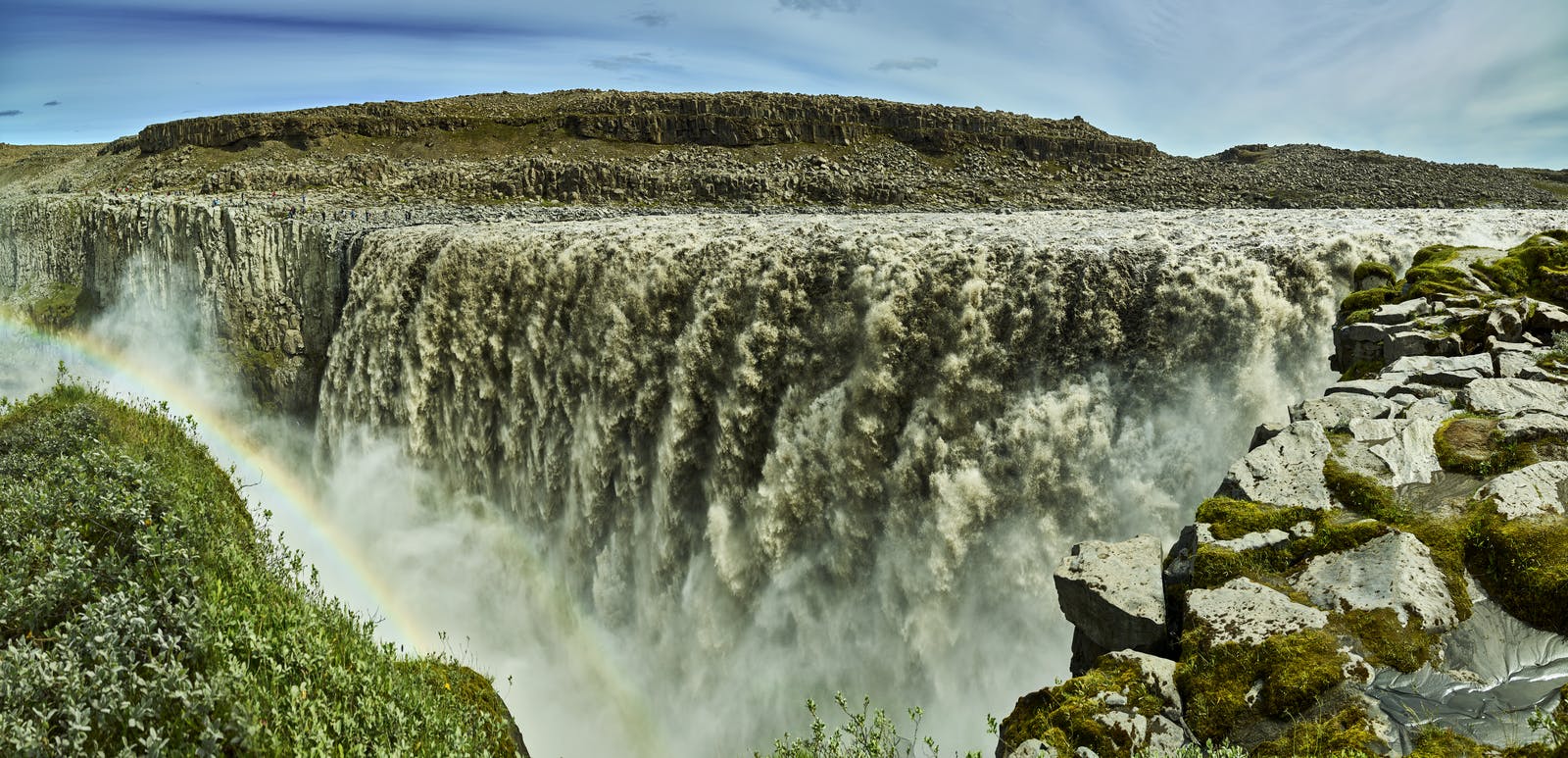
Guide to the Powerful Dettifoss Waterfall in Iceland
Dettifoss often hailed as the "Niagara of Europe," is a breathtaking natural wonder nestled in the northeastern region of Iceland. This awe-inspiring waterfall is renowned for its raw power, striking beauty, and the captivating landscapes surrounding it. Dettifoss directly translates to "Falling Falls" or "Tumbling Falls".
Dettifoss Waterfall
Dettifoss is situated within Vatnajökull National Park, in the Jökulsárgljúfur canyon of the Jökulsá á Fjöllum River. The Vatnajökull National Park was established in 2008 and is the largest national park in Europe - covering approximately 14% of Iceland's land area. The crown jewel of the park is the Vatnajökull Glacier, the largest ice cap in Europe. Besides Dettifoss, Vatnajökull National Park is home to several natural wonders, including Svartifoss and Jökulsárlón.
Vatnajökull National Park is part of a UNESCO World Heritage Site. The park's diverse landscapes, including glaciers, volcanoes, and waterfalls, contribute to its recognition as a site of outstanding natural significance.
The fall’s remote location adds to the allure of the waterfall, providing visitors with a unique and unspoiled natural experience. The waterfall is positioned amidst a rugged and captivating landscape, surrounded by lava formations, basalt columns, and striking cliffs that enhance its dramatic presence.
Accessibility
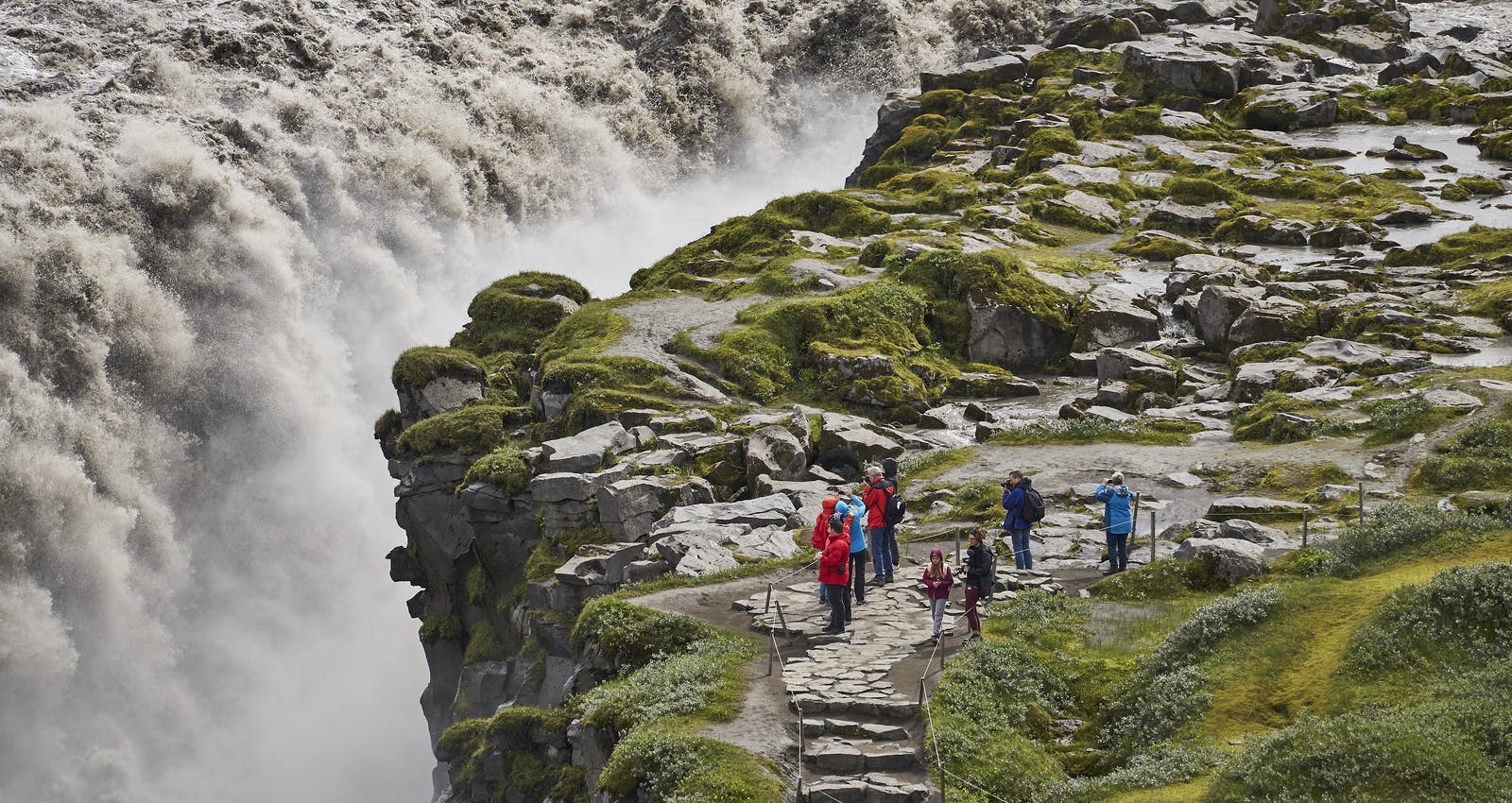
Despite its remote location, Dettifoss is relatively accessible to visitors. A well-maintained trail from the parking area provides various viewpoints, allowing visitors to experience the waterfall from different angles. The short hike makes it feasible for a wide range of visitors, including those with varying fitness levels.
Dettifoss is accessible from two sides: the west bank and the east bank. The two options are both viable. However, there are a few differences in the road conditions and amenities.
Dettifoss can be accessed from its west side via Route 862, a paved road constructed in 2011. Route 862 offers year-round access to Dettifoss to varying degrees, whereas an older gravel road, Route 864, provides access to the east side but is typically navigable only in the summer.
Minimal amenities are available on the west bank, including a pit toilet, a well-maintained hiking path, and a viewing platform. The round trip from the parking lot to the waterfall is approximately 3 kilometres (1,8 miles). On the east bank, there is an information panel managed by Vatnajökull National Park staff, a public toilet, and a trail leading to the waterfall. The trail on the east side is a total of 1,5 kilometres (approximately 1 mile), round trip.
Dettifoss is a featured attraction on the Diamond Circle, a popular tourist route encompassing Húsavík and Lake Mývatn in North Iceland.
The Most Powerful Waterfall
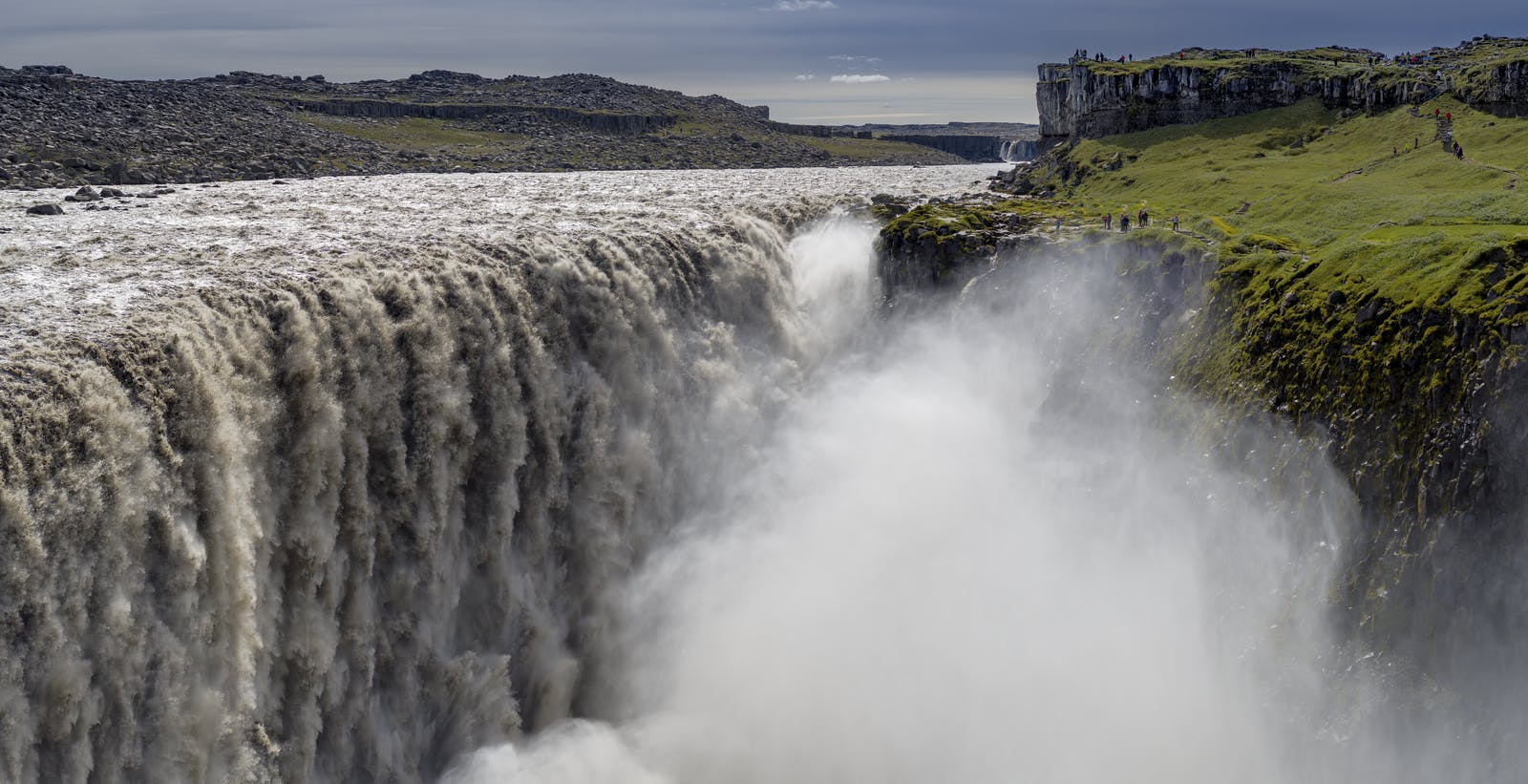
Dettifoss Waterfall is known as the most powerful waterfall in Iceland. It is also the second most powerful waterfall in Europe. The waterfall boasts an average water discharge of approximately 193 cubic metres (6.816 cubic feet) or 193.000 litres (50.985 gallons) per second, creating a thunderous roar as the glacial water plummets over a 44 metre (144 feet) high and 100 metres (328 feet) wide precipice. The sheer force of the water generates a fine mist that envelops the surroundings, creating rainbows on sunny days and contributing to the magical atmosphere of the area.
Geological Marvel
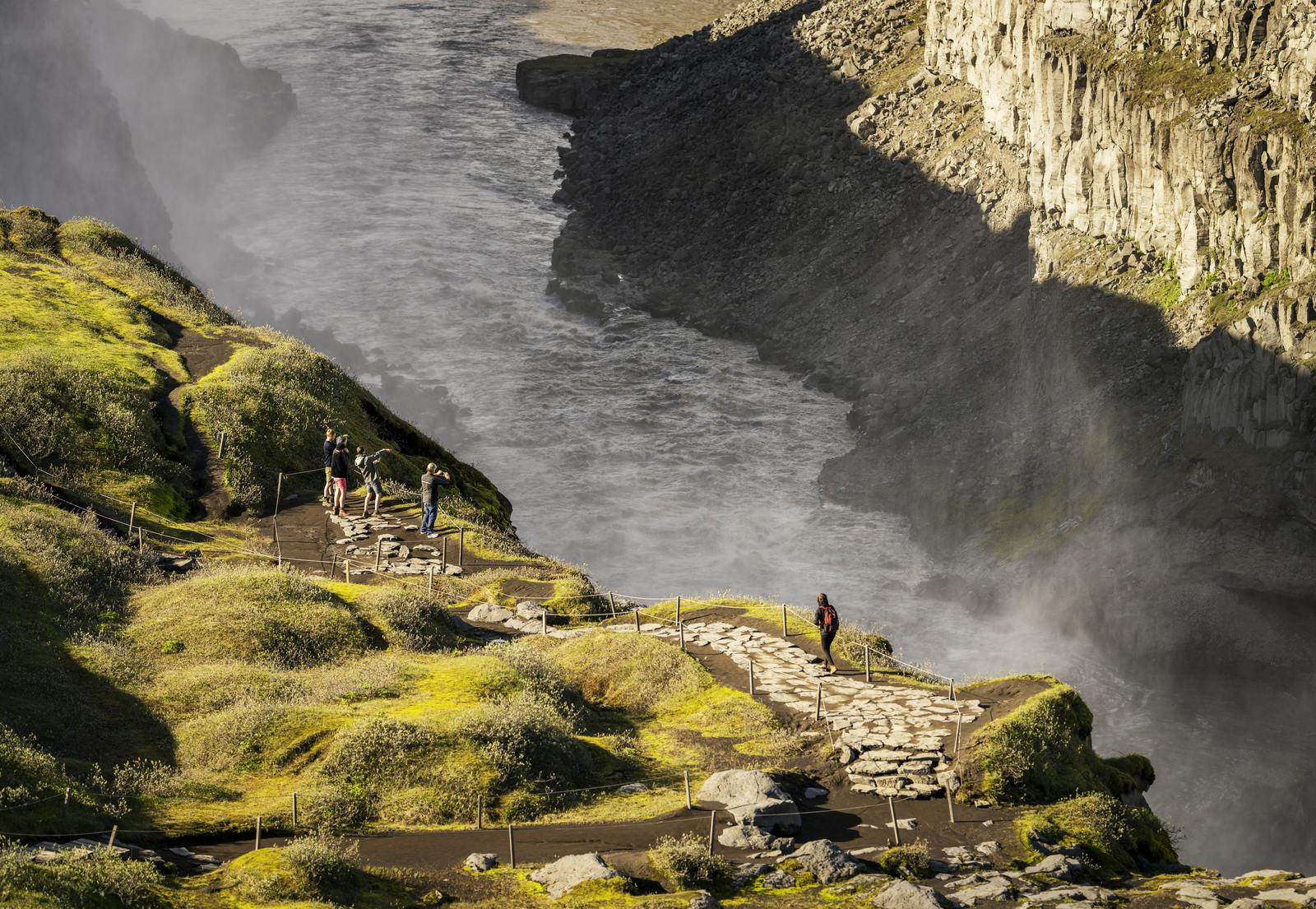
Dettifoss owes its grandeur to the Vatnajökull Glacier, the largest ice cap in Europe, feeding the Jökulsá á Fjöllum River. It tumbles down into the great canyon, Jökulsárgljúfur. The surrounding black basalt columns, a result of ancient volcanic activity, add to the geological allure of the area, showcasing Iceland's unique and dynamic geological history. The Jökulsá River flows along the northern volcanic belt of Iceland and has been affected by glacier floods and lava.
Glaciers and Waterfalls
At Perlan Museum in Reykjavík, you can explore glaciers and their importance for Iceland's climate. They are an essential source of fresh water for the island, as well as adding beauty and magic to the diverse nature. As Dettifoss is fed by Vatnajökull, the largest glacier in Iceland, the waterfall is a direct effect of the changing climates. Discover more about Iceland's glaciers and their bleak future at Perlan Museum.
Nearby Attractions
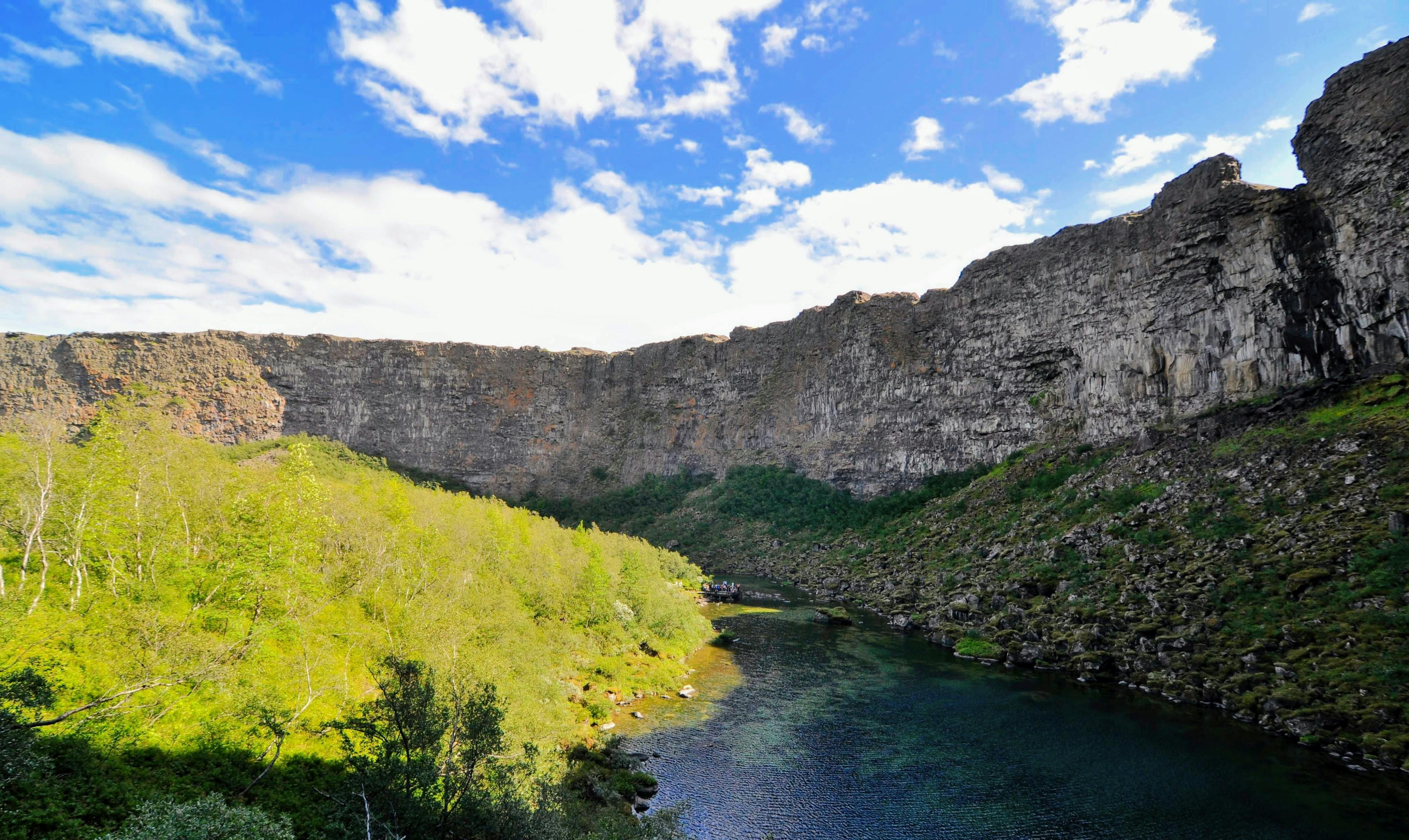
Dettifoss Waterfall is located in northeastern Iceland, in Vatnajökull National Park, surrounded by many natural wonders and attractions.
Selfoss Waterfall
Located downstream from Dettifoss, Selfoss is another impressive waterfall in the Jökulsá á Fjöllum River. While not as powerful as Dettifoss, Selfoss is characterised by its multiple cascades and unique formations.
Hljóðaklettar
Also known as "The Whispering Rocks," Hljóðaklettar is a fascinating area of basalt columns and cliffs shaped by ancient volcanic activity. The rocks come in various shapes, creating an otherworldly landscape that's perfect for exploration.
Ásbyrgi
A horseshoe-shaped canyon, Ásbyrgi is steeped in Icelandic folklore. According to legend, the canyon was formed by the hoofprint of the Norse god Odin's eight-legged horse, Sleipnir. Ásbyrgi offers hiking trails and stunning viewpoints.
Jökulsárgljúfur Canyon
This canyon, carved by the Jökulsá á Fjöllum River, is home to both Dettifoss and Selfoss. The canyon itself is a stunning natural wonder, offering opportunities for hiking and exploration. It is 25 km long and over 100 m deep in many places.
How To Get to Dettifoss From Reykjavík
Dettifoss is located 521 kilometres (approximately 324 miles) from Reykjavík, which will take about 7 hours by car under normal circumstances. Ensure to check road conditions before departing, and stay updated during the travel as weather can change quickly and affect road conditions. If you are keen on visiting Dettifoss, here is a brief guide:
- Take Route 1 (Ring Road) northeast from Reykjavík. This well-maintained road takes you through charming towns, coastal areas, and expansive lava fields.
- Continue on Route 1 until you reach Akureyri, the largest town in northern Iceland.
- From Akureyri, head east on Route 1 until you reach the junction for Route 864, the road leading to Dettifoss.
- Once on Route 864, follow the signs leading to Dettifoss. This road may be gravel but is generally accessible for most vehicles, depending on weather conditions. Drive carefully, and be prepared for a short distance on an unpaved surface.
- Upon reaching the Dettifoss area, you'll find a parking lot where you can leave your vehicle. From there, a well-marked trail takes you to various viewpoints, providing breathtaking perspectives of the mighty waterfall.
FAQ
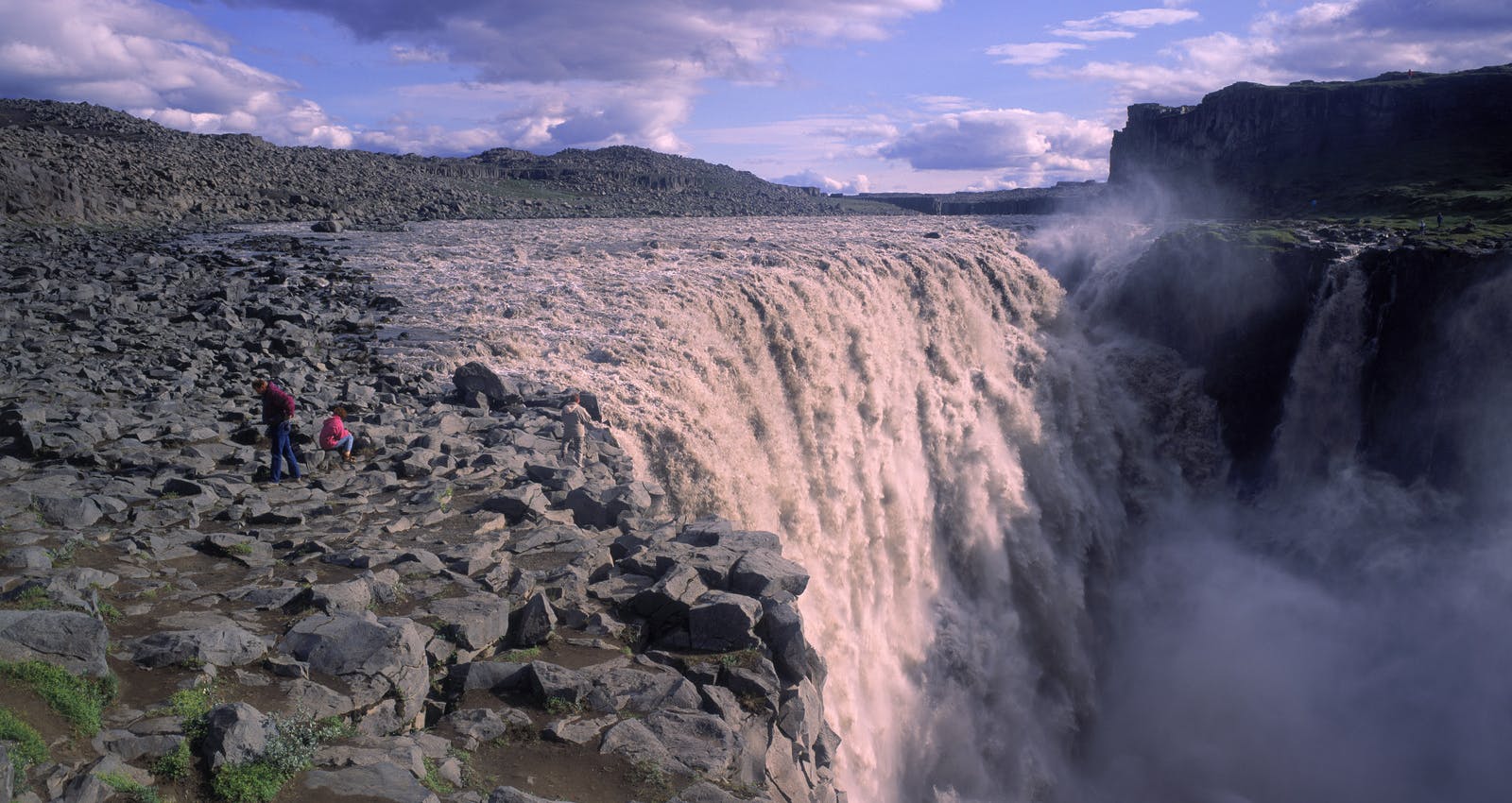
Can You Drive to Dettifoss in Winter?
Driving to Dettifoss in winter requires careful consideration of weather conditions. Route 864 leading to Dettifoss may be inaccessible or challenging to navigate during extreme winter weather. It's crucial to check road conditions, weather forecasts, and travel advisories before embarking on the journey. Additionally, renting a four-wheel-drive vehicle is recommended during the winter months to ensure better traction on icy or snow-covered roads.
How Long Is The Hike to Dettifoss?
The hike to Dettifoss from the parking area is relatively short and accessible for most visitors. The distance is around 1 kilometre (0,6 miles), and the trail is well-maintained, making it suitable for all fitness levels. The short walk provides an opportunity to soak in the surrounding landscape and enjoy various viewpoints along the way. Visitors can choose their vantage point, each offering a unique perspective of the majestic waterfall.
Is The Road to Dettifoss Paved?
The road leading to Dettifoss, specifically Route 864, is not paved for its entire length. Travellers should be prepared for a bumpy ride, especially during inclement weather. It's advisable to drive cautiously, adhere to speed limits, and be aware of the road conditions, especially considering the weather's impact on gravel roads.
How Does Dettifoss Compare to Niagara Falls?
Dettifoss and Niagara Falls are both magnificent waterfalls, each with its unique characteristics. Niagara Falls is larger in width, height and water flow. Still, as Dettifoss is one of Europe's most powerful waterfalls, it is often referred to as the European Niagara Falls.







